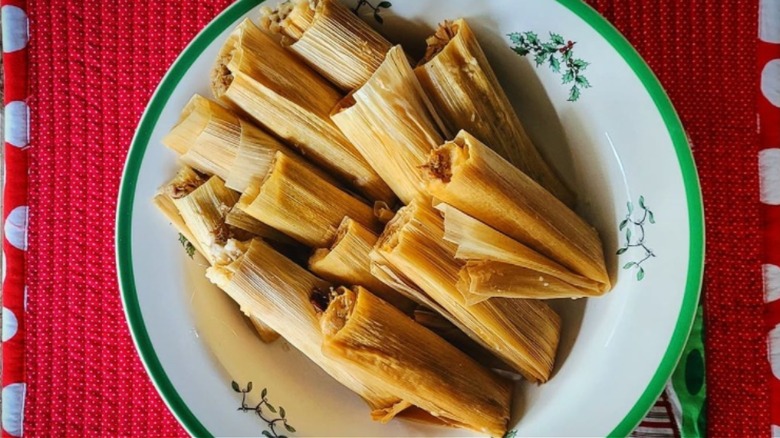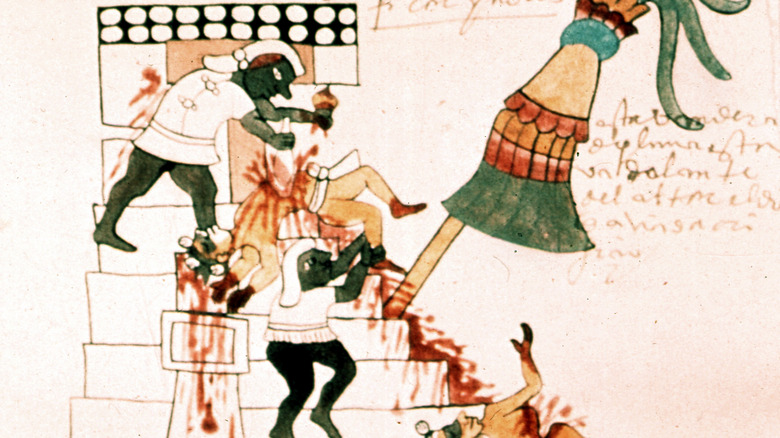Christmas Tamales Have A Surprisingly Dark Backstory
We may receive a commission on purchases made from links.
Many countries and cultures have their own traditional Christmas foods. The U.S. is all about candy canes (even the weird ones) and decorated cookies, while a true British Christmas comes complete with plum pudding and mince pies. Christmas in Japan, on the other hand, means KFC is what's for dinner. South of the border (as well as throughout the entire Mexican diaspora) there's one food that is a must for the entire holiday season, which the Los Angeles Times says kicks off on December 12 with the Feast of Our Lady of Guadalupe and runs all the way through January 6, or Día de los Tres Reyes Magos.
As the Smithsonian Center for Folklife and Cultural Heritage tells it, the days leading up to the holidays are time for tamaladas – tamale-making parties that involve the entire family working together to make this traditional holiday treat. Children's book "Too Many Tamales," by author Gary Soto, tells the story of just such a party — a very eventful one, but (as is typical for Christmas stories not named "The Little Match Girl") one with a happy ending (via Amazon). But just how did tamales become a go-to Mexican Christmas dish? Well, the reason is complicated, and not terribly festive. Even darker than the aforementioned Hans Christian Andersen tale, this is a story that's probably not told to children by the fireside or in front of a Christmas tree.
Tamales were used as a ritual offering
The way the Los Angeles Times explains it, tamales were a staple food in pre-Columbian days, long before Christmas, or even Christianity, came to Mesoamerica. Hieroglyphic depictions of tamaladas have been found dating from Olmec and Toltec times, and the word "tamal" actually comes from one of the languages spoken by the Aztec peoples. Tamales were originally valued for their portability, being the kind of thing you could take with you on a journey; but they were (and still are) something eaten daily. Nevertheless, tamales also had a special significance due to the fact that they are made with corn meal, and corn was seen as the staff of life. Some creation myths even stated that humans were formed by the gods out of corn.
One major Aztec religious celebration was the winter solstice festival Panquetzaliztli (via Edible Manhattan). As a part of the festivities, human captives were sacrificed to the sun god. The sacrifices were also used to make pozole, which was eaten by priests, warriors, and other influential citizens. When the conquistadors arrived in Mexico, they sought to end many indigenous customs in an attempt to obliderate the culture. One practice they disallowed was human sacrifice, so the Aztec people began using tamales for the ritual offering instead. When their descendants converted to Christianity, they retained the custom of eating tamales (and pozole) in December, and many still do to this day.

